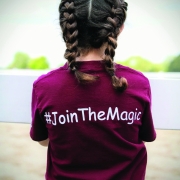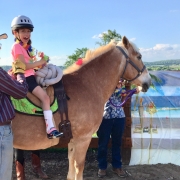Therapy of a Different Breed
COLLECTED, WRITTEN & EDITED
By NASTASSIA PUTZ, PAULA MACIOLEK & JESSICA PAIRRETT
Whether you have a child with behavior problems, a teenager with depression or anxiety, or a family member with physical health issues, equine therapy or hippotherapy can benefit anyone suffering physical, mental or emotional ailments.
The earliest known mention of equine therapy can be traced back to roughly 400 B.C. and was discovered in ancient writings from Greek physician Hippocrates.
It wasn’t until 1952 when Liz Hartel from Denmark won a silver medal in Grand Prix dressage at the Helsinki Olympic Games that it entered the limelight. Hartel found that using horses was a great way to strengthen her lower body, especially after she had developed some paralysis in her legs caused by polio. Hartel’s success woke up the medical and equine communities in Europe, and therapeutic riding programs began emerging.
Talk then traveled from Europe to the U.S. and Canada, giving like-minded individuals the initiative to start therapeutic riding centers in North America. In 1969, the North American Riding for the Handicapped Association (NARHA) was started and eventually became known as PATH International, which includes dozens of different equine-assisted activities that benefit people with special needs.
This brilliant and organic therapy can now be found locally in most areas and has helped shape the worlds of many. According to PATH International’s 2017 Fact Sheet, autism spectrum disorder is the number one most served population under the special needs umbrella. And ages 6 to 18 seem to be the majority of the participants in equine therapy. Take a look at some of the local ones here in Wisconsin.

 Copper Arrow Photography
Copper Arrow Photography









